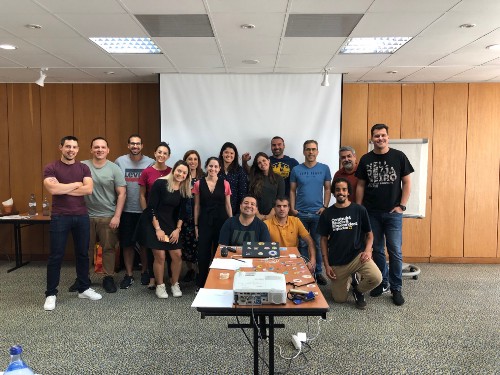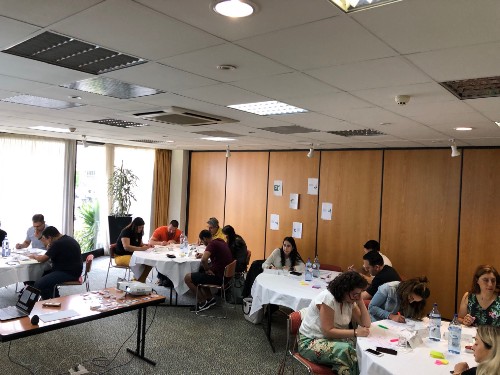

Hey everyone, how are you?
Acredito que muitos de vocês já conhecem os 7 níveis de delegação então fiquem tranquilos pois não serei mais uma pessoa que vai escrever e explicar o que é, de onde vem e como usar porque tem muito artigo bom publicado (podem ler no nosso blog em Português).
Meu objetivo é contar um caso real que aconteceu comigo em uma aula de Management 3.0 que ministrei em 2019 no Porto, Portugal.
Context
Eram 17 alunos na turma aprendendo sobre Management 3.0 sendo que a maioria não se conhecia. Até aí nada de especial.
Ainda no 1º dia chegamos à parte de delegação e empoderamento, passamos pela teoria e também por uma prática usando um case fictício e após o debriefing da dinâmica, surpreendi a turma com uma prática real onde eles deveriam usar os 7 níveis de delegação para resolver uma questão:
Eles deveriam escolher 3 pessoas entre eles para ganhar um voucher para fazer a prova da Certificação de “Professional Agile Leadership” da Scrum.Org.
Obs: Nessa época a Management 3.0 estava rodando um experimento e disponibilizou alguns vouchers para os trainers doarem aos alunos das turmas. Eu tinha 3 vouchers disponíveis e poderia utilizar com os alunos da forma que eu quisesse e achei justo deixar que eles mesmos se auto organizassem e decidissem por si só.
Mas Ricardo, isso tem tudo pra dar errado. Eles não se conhecem, são 17 pessoas, é uma certificação reconhecida, vai dar briga…. Mas não deu 😉
Here’s how I aligned the dynamics and their constraints (connecting with the content of Align Constraints):
From there they got together in a group and started talking and voting to find out:
The conversations were happening little by little, some people naturally gave up participation because they understood that it didn’t make as much sense for them at that moment as it would for other students who were also interested.
Yes folks, that’s what you understood: They had met about 3 to 4 hours before, they were talking about getting a voucher for an important certification and some people gave up participating in favor of others.
They took about 30 minutes to decide who would be the 3 people who would win the voucher and be amazed: there was no fight, on the contrary, the staff had a lot of fun and helped even more in the team building of the class.

I want to mention some important points that helped in their interaction.

In the end, it was a very fun and practical moment that proved that people are able to organize themselves, align restrictions and be empowered to make decisions. Of course, each case is different and the levels of delegation vary for each context (don’t forget that).
After that the class followed its course and we had 2 very practical and fun days of exchange of knowledge and experience and a few months later the students informed me of the results of the tests. One of them passed and two others didn’t, but it was almost and I passed the information to Management 3.0 to validate or invalidate his experiment.
Some reflections:
You cannot delegate what has no autonomy
“Delegation is the first step towards Trust”
I’m happy to be able to share this case with you and if you want to talk more about it, I’m available.
See you soon ;-)
Ricardo Caldas
